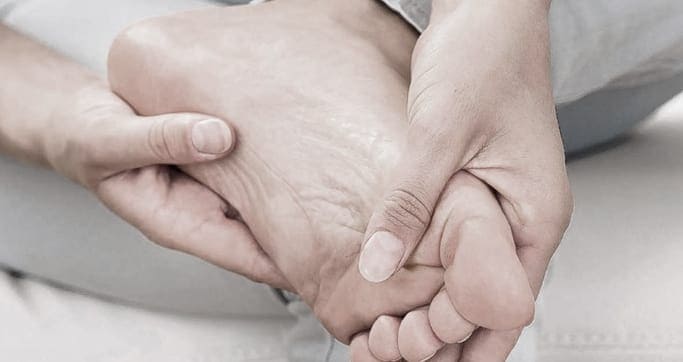When you seek treatment for heel pain, chances are high that you will be diagnosed with plantar fasciitis, which is responsible for roughly 70 percent of all reported cases of foot pain. Yet that leaves 30 percent of cases where heel pain generates from another source. Because plantar fasciitis is so common, other sources of heel pain are often overlooked, meaning that treatment may sometimes be misdirected.
The plantar fascia is a long fibrous ligament that spans the bottom of your foot, connecting your heel bone to your toes. The PF supports your foot arch and provides shock absorption. It also serves as a sort of spring, to help propel you as you walk, run and jump. The plantar fascia can become irritated and inflamed, causing heel and foot pain that make walking, running and standing uncomfortable.
However, there are a number of other sources of foot and heel pain, and they should be considered during diagnosis to ensure treatment targets the actual cause of pain.
Common causes of foot and heel pain other than plantar fasciitis include:
- A tear in the plantar fascia that may co-exist with plantar fasciitis
- Tarsal tunnel syndrome
- Baxterтs nerve entrapment
- Stress fracture of the heel bone
- Cysts on the heel bone
- A tear in the short flexor tendon
- Gout
- Arthritis
Because there are so many possible causes of heel pain, accurate diagnosis is essential to developing the best treatment plan.
Diagnostic ultrasound can accurately visualize the structures in the foot and heel in real time, including bones, muscles, tendons, ligaments and nerves, to help pinpoint the exact cause of heel pain. Because ultrasound provides immediate results, treatment can begin right away, helping speed up the healing process.
When seeking treatment for heel pain, look for a rehab clinic that offers individualized therapy based on sound diagnosis. Treatment for plantar fasciitis will differ from treatment for other heel pain issues. An important part of healing is correcting the source of heel pain.
Once pain and inflammation have abated and healing is well underway, your therapist may prescribe a number of solutions, including:
- Gait analysis and retraining
- Stretching exercises
- Strengthening exercises
- Athletic taping
- Postural correction
- Shoe orthotics
Note that eliminating pain symptoms does not necessarily mean you have eliminated the source of pain. Look for a foot pain specialist who goes beyond pain treatment to identifying and treating the root cause of your symptoms.
Accurate diagnosis and appropriate treatment are fundamental to resolving your heel pain. The foot pain specialists at NYDNRehab use diagnostic ultrasound and other advanced methods to correctly diagnose your heel pain. They then use cutting-edge technologies and proven strategies to rehabilitate your painful foot.
At NYDNRehab, we go beyond just treating your symptoms to resolving underlying issues. The sports medicine professionals at NYDNRehab can be counted on to give you a quick and accurate diagnosis followed by treatment protocols that eliminate the cause of your foot pain. Contact a consultation with the foot pain specialists at NYDNRehab today, and see why we are the very best rehab clinic for heel pain in NYC.
























































